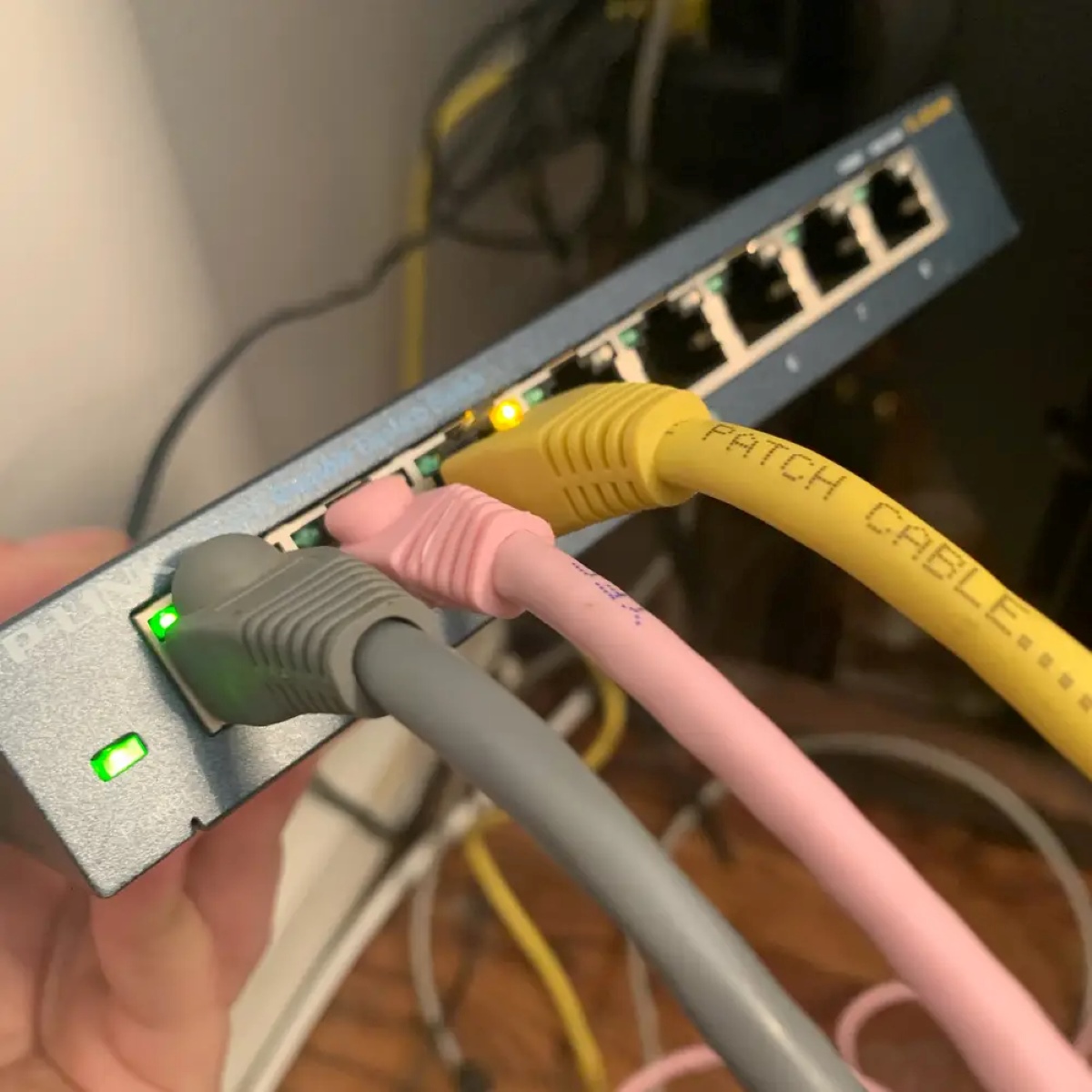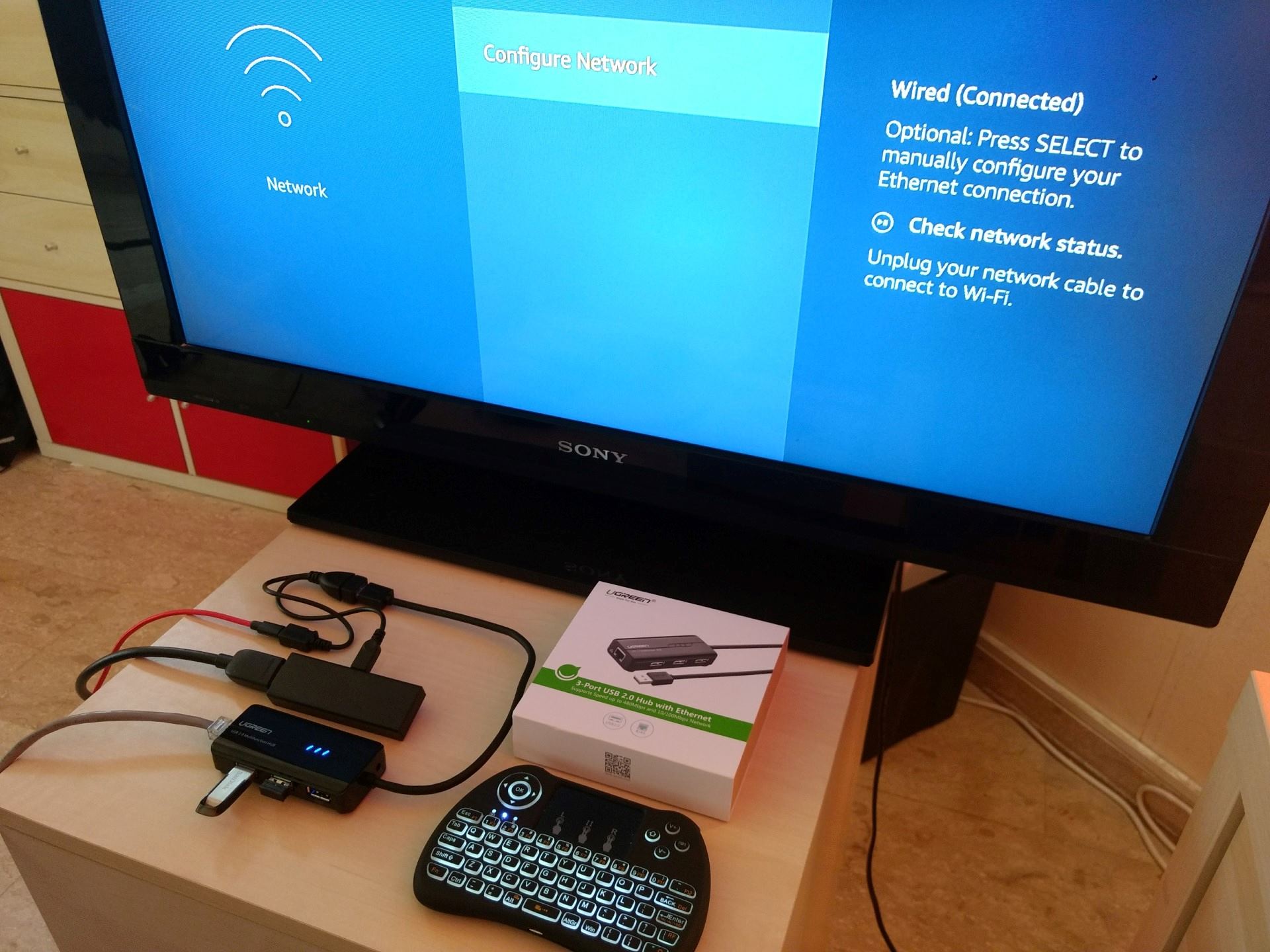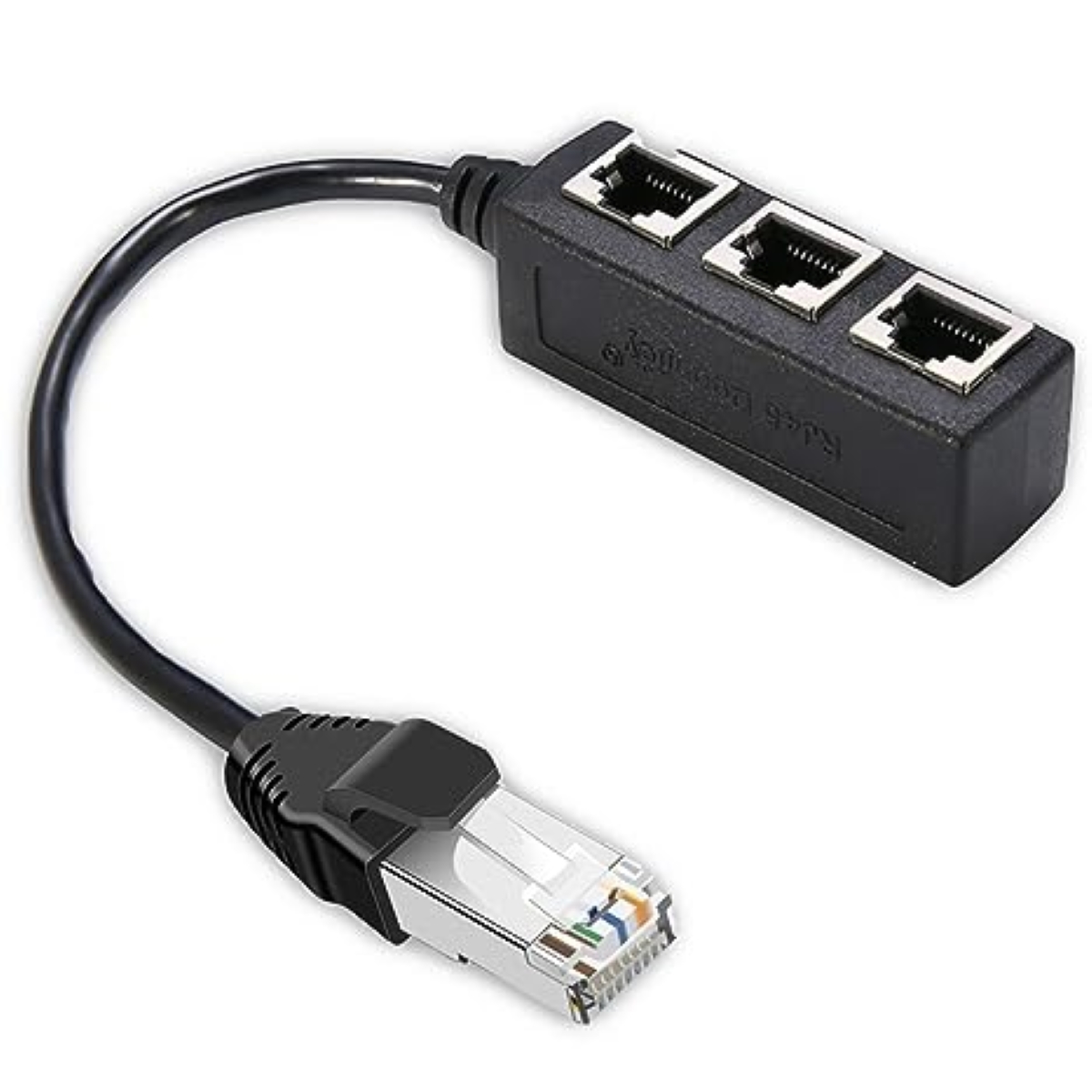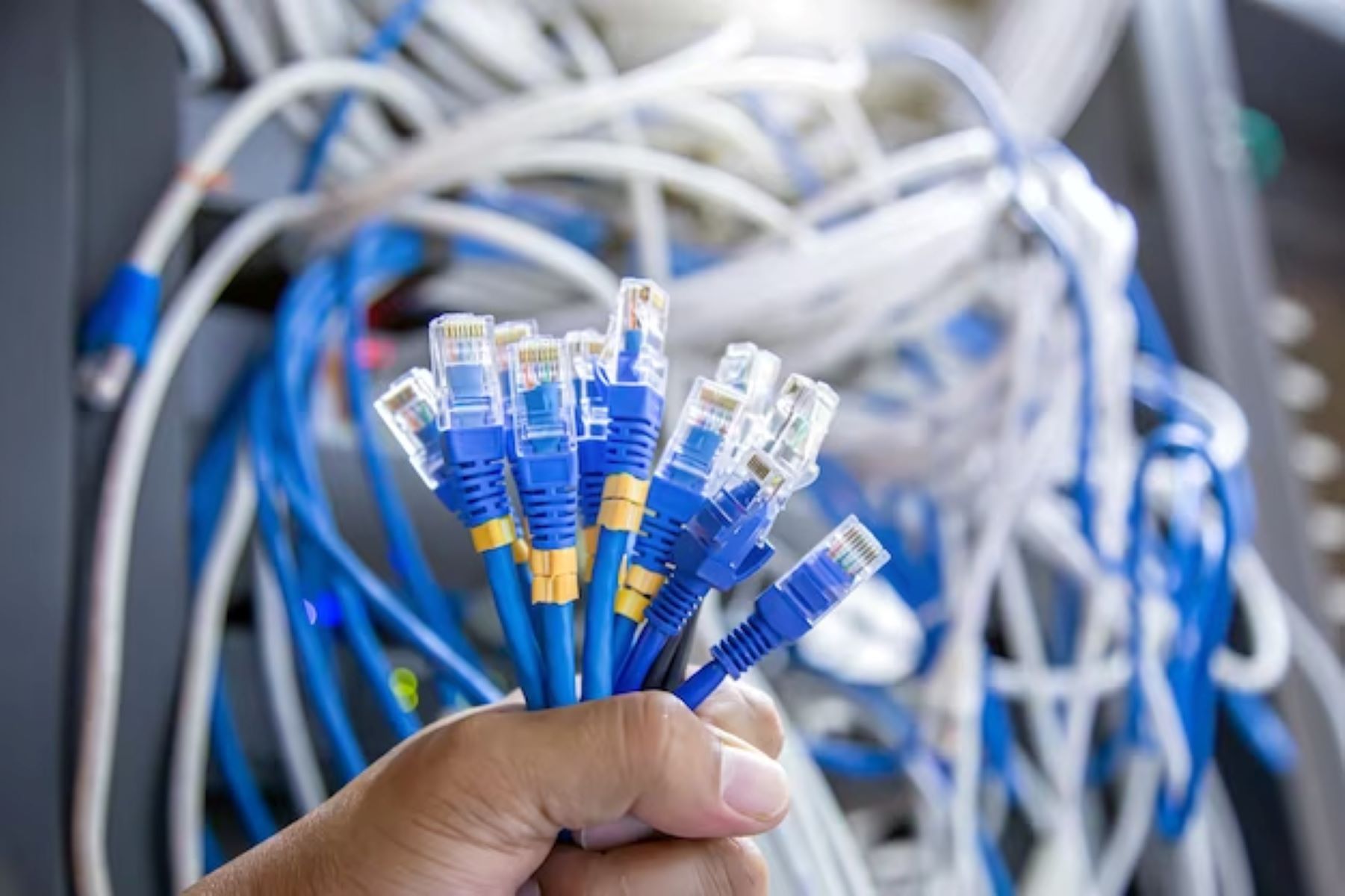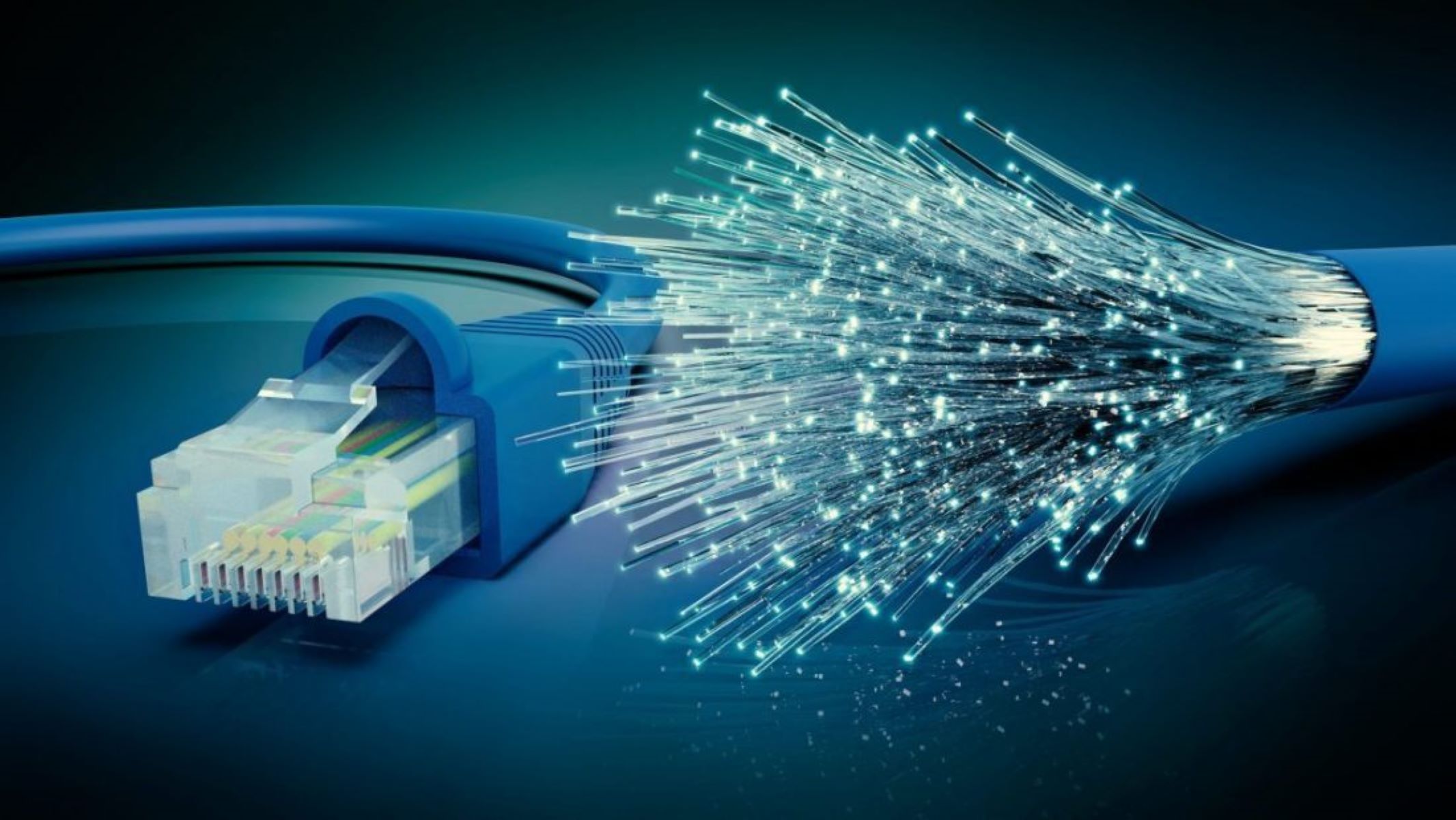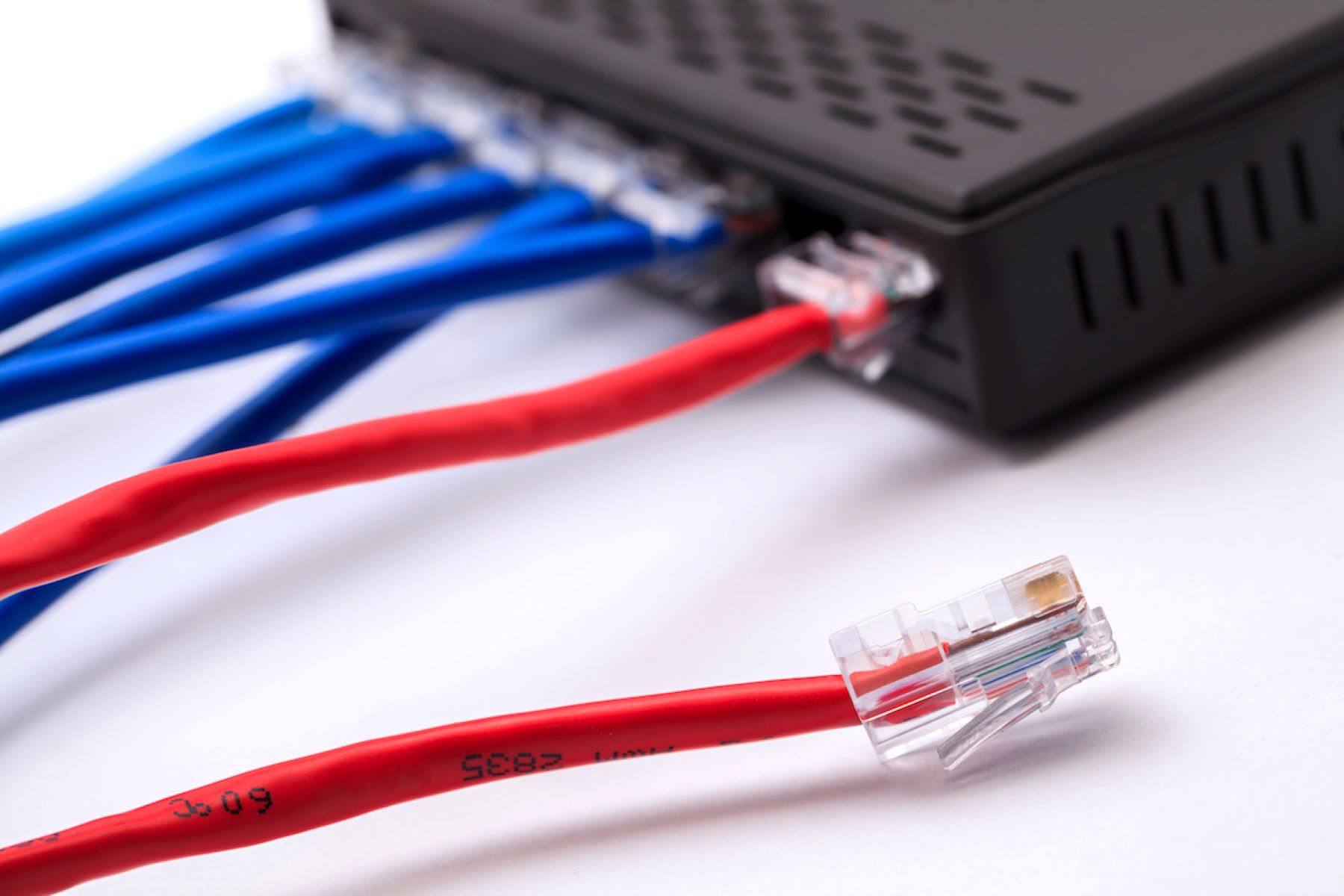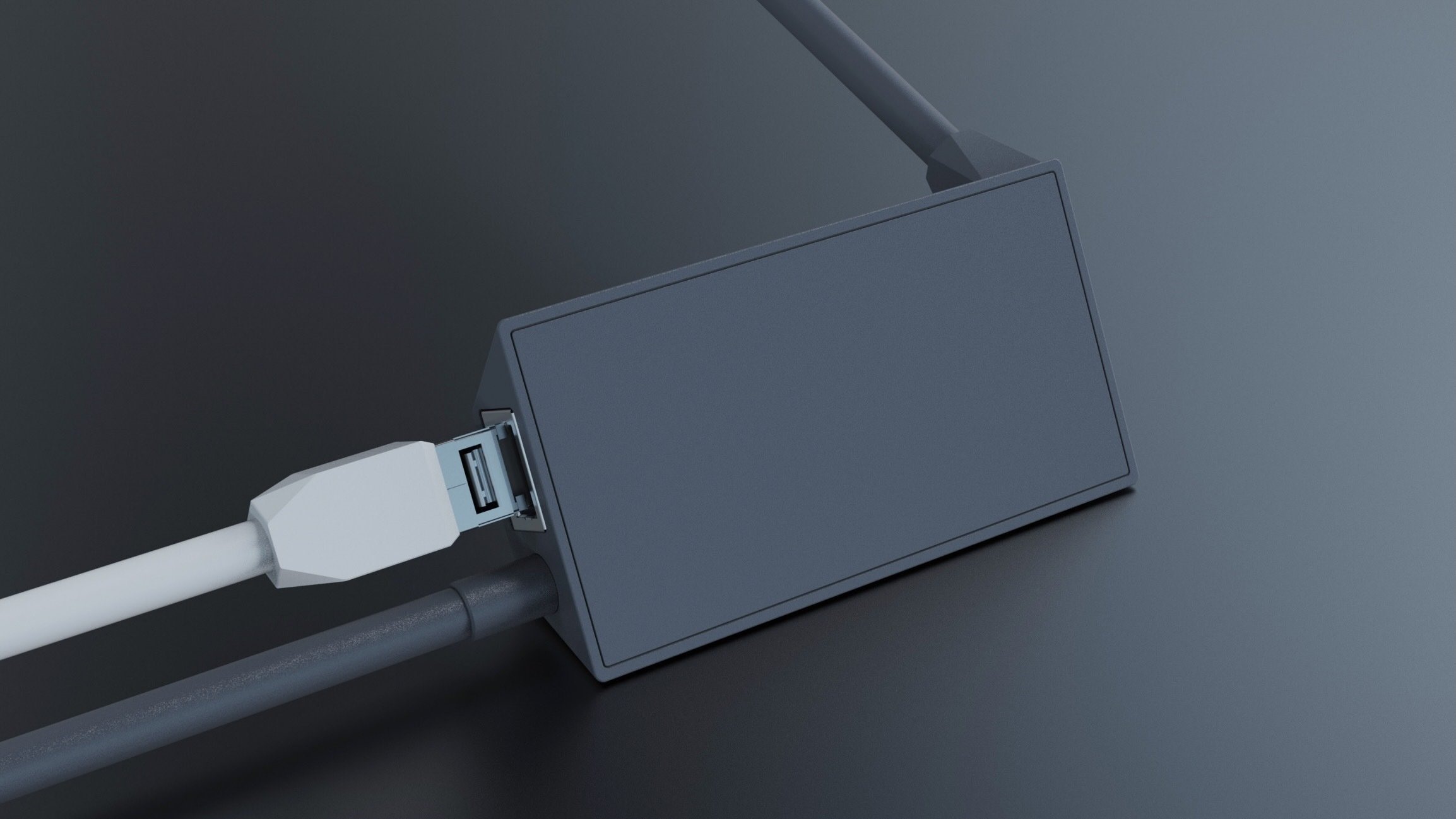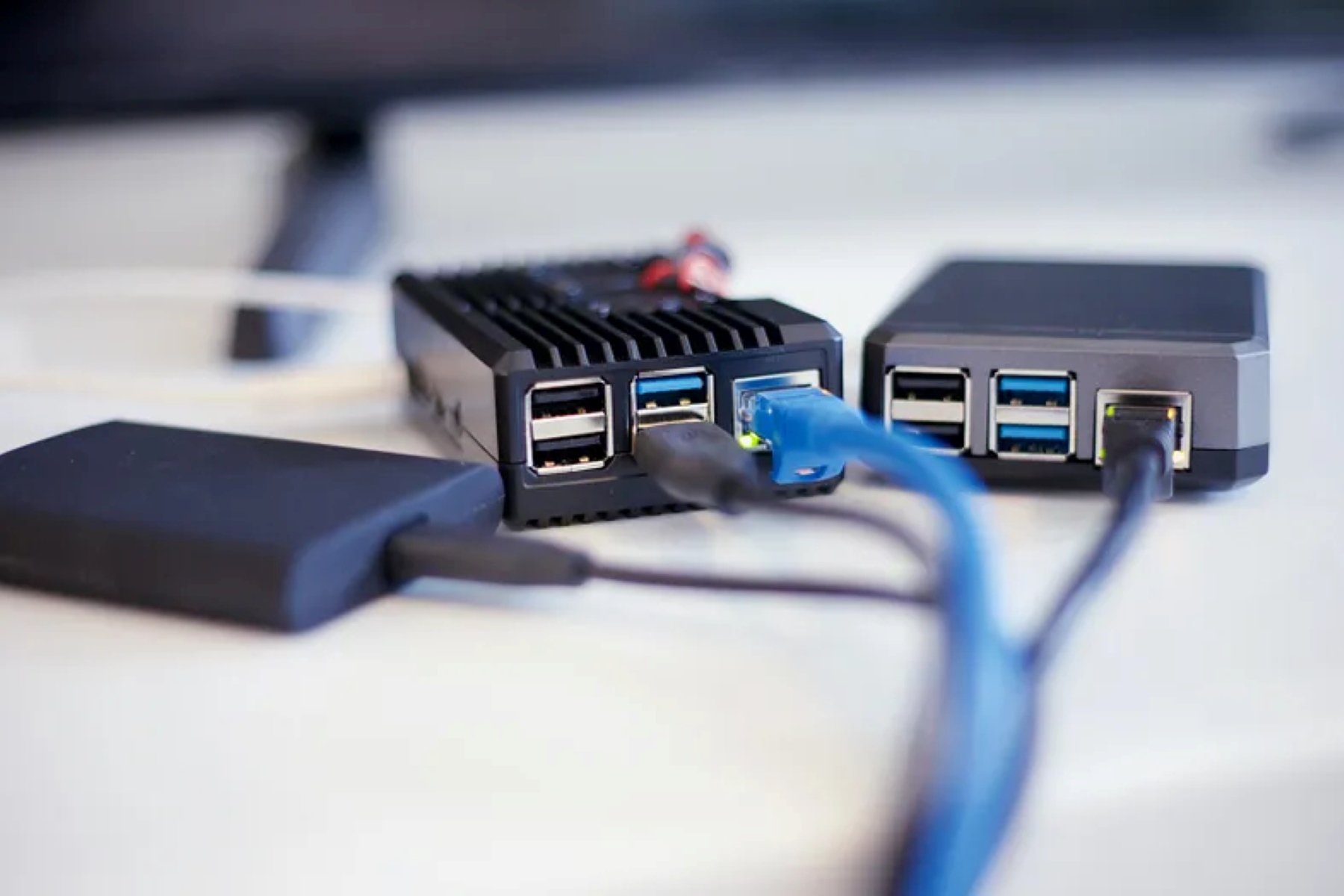Introduction
Ethernet is a widely used technology that allows devices to connect and communicate with each other over a local area network (LAN). It is the most common method of wired networking and is essential for data transfer in homes, businesses, and institutions. Ethernet provides a reliable and efficient way to transmit data packets between devices, enabling seamless connectivity and the sharing of resources.
In this article, we will delve into the world of Ethernet networking, exploring its history, standards, components, cables, speeds, switches, and its comparison to Wi-Fi. Whether you’re a tech enthusiast or simply curious about how your devices are connected, this article will provide you with a comprehensive understanding of Ethernet and its significance in modern networking.
Understanding Ethernet is crucial in today’s digital age as it forms the backbone of most wired local area networks. Whether you’re connecting your computer to the internet, setting up a smart home, or establishing a corporate network, Ethernet is the underlying technology that enables devices to communicate and share data reliably and efficiently.
Throughout this article, we will uncover the various aspects of Ethernet, starting with its origins and the development of standards that have shaped its evolution. We will explore the different components involved in an Ethernet network, from routers and switches to cables and connectors. In addition, we will discuss the different types of Ethernet cables available and the speeds at which data can be transmitted over these cables.
Moreover, we will examine the role of Ethernet switches in managing network traffic and ensuring a smooth and efficient data flow. We will also compare Ethernet to its wireless counterpart, Wi-Fi, highlighting the benefits and limitations of each technology to help you make an informed decision on which one suits your networking needs.
By the end of this article, you will have a strong grasp of Ethernet networking, enabling you to effectively set up and troubleshoot your own Ethernet connections, understand the underlying technology behind your internet connection, and appreciate the vital role Ethernet plays in our interconnected world.
What Is Ethernet?
Ethernet is a widely-used networking technology that allows computers, devices, and systems to communicate with each other over a local area network (LAN). It provides a reliable and efficient means of transmitting data packets between devices, enabling seamless connectivity and the sharing of resources.
At its core, Ethernet is a set of rules and protocols that govern how data is transmitted over a network. It defines the physical and data link layers of the network, determining how devices are connected, how they communicate, and how data is formatted and transmitted.
In an Ethernet network, devices are connected using Ethernet cables, which can be plugged into Ethernet ports on computers, routers, switches, and other networking equipment. These cables serve as the medium for data transmission, allowing information to flow between devices at high speeds.
One of the key features of Ethernet is its use of the Carrier Sense Multiple Access with Collision Detection (CSMA/CD) protocol. This protocol ensures that devices on the network can access the network medium (the cables) fairly and without causing data collisions. It detects collisions and retransmits data to ensure reliable delivery.
Ethernet supports various transmission speeds, commonly measured in megabits per second (Mbps) or gigabits per second (Gbps). The speed at which data can be transmitted depends on the specific Ethernet standard and the type of Ethernet cable being used.
Overall, Ethernet is a fundamental networking technology that forms the backbone of most wired local area networks. It provides a reliable, efficient, and cost-effective solution for connecting devices and enabling data transfer. From small home networks to large corporate infrastructures, Ethernet plays a crucial role in facilitating communication and collaboration.
As technology continues to advance, Ethernet evolves to meet the increasing demands for faster and more reliable data transmission. Newer Ethernet standards, such as 10 Gigabit Ethernet (10GbE) and 100 Gigabit Ethernet (100GbE), support even higher data speeds, making Ethernet an indispensable technology for the modern world.
History of Ethernet
Ethernet has a rich history that dates back to the 1970s when it was developed by Robert Metcalfe at Xerox Corporation’s Palo Alto Research Center (PARC). Metcalfe and his team aimed to create a local area networking system that could connect computers and share resources within an office environment.
The original Ethernet design, known as Ethernet Version 1.0, operated at a speed of 2.94 Mbps and used a coaxial cable as the transmission medium. It employed the CSMA/CD protocol to manage network access and avoid data collisions. This early version of Ethernet laid the foundation for the technology we use today.
In 1980, the Institute of Electrical and Electronics Engineers (IEEE) formed a committee to standardize Ethernet. This resulted in the development of the first official Ethernet standard, IEEE 802.3, which was released in 1983. The IEEE 802.3 standard specified the data link and physical layer requirements for Ethernet networks, including the Ethernet frame format and the use of the CSMA/CD protocol.
Over the years, Ethernet has undergone significant advancements and improvements. In 1985, Ethernet Version 2 (also known as Ethernet II) was released, which increased the maximum data rate to 10 Mbps and introduced the 48-bit MAC address format that is still used today.
In the 1990s, Fast Ethernet was introduced, which increased the data rate to 100 Mbps. This allowed for faster data transmission and enabled more demanding applications. Later, Gigabit Ethernet was developed, offering data rates of up to 1 Gbps, further enhancing network performance.
With the increasing demand for higher speeds, Ethernet continued to evolve. Today, we have Ethernet standards such as 10 Gigabit Ethernet (10GbE), 40 Gigabit Ethernet (40GbE), and 100 Gigabit Ethernet (100GbE), which provide even faster data rates and are commonly used in enterprise networks and data centers.
The widespread adoption of Ethernet can be attributed to its open standard nature. Unlike proprietary networking technologies, Ethernet is not owned by a single company, making it accessible and compatible across a wide range of devices and vendors.
Through its evolution, Ethernet has become the de facto standard for wired networking. It has revolutionized the way we connect and communicate, enabling seamless collaboration and resource sharing within offices, campuses, and data centers. The continuous advancements in Ethernet technology ensure that it remains at the forefront of networking, meeting the ever-growing demands of the digital age.
Ethernet Standards
Ethernet standards define the technical specifications and parameters for Ethernet networks, ensuring compatibility and interoperability between different devices and manufacturers. These standards are developed by the Institute of Electrical and Electronics Engineers (IEEE) and are commonly referred to as IEEE 802.3 standards.
The first official Ethernet standard, IEEE 802.3, was released in 1983 and defined the original Ethernet operating at 10 Mbps. Since then, several standards have been introduced to accommodate increasing data rates and technological advancements.
Fast Ethernet, also known as 100BASE-T, was introduced as an extension to the original Ethernet standard. It operates at a data rate of 100 Mbps and uses the same CSMA/CD protocol. Fast Ethernet provides a significant improvement in network performance and is still widely used in many environments.
Gigabit Ethernet, or 1000BASE-T, is another major Ethernet standard that offers data rates of up to 1 Gbps. It provides ten times the speed of Fast Ethernet, making it suitable for bandwidth-intensive applications such as video streaming and large file transfers. Gigabit Ethernet is now the standard for most wired networks.
As the demand for higher speeds increased, Ethernet standards continued to evolve. 10 Gigabit Ethernet (10GbE) was introduced to cater to the growing needs of data centers, high-performance computing, and enterprise networks. This standard supports data rates of 10 Gbps and provides faster and more efficient data transmission.
Further advancements led to the development of 40 Gigabit Ethernet (40GbE) and 100 Gigabit Ethernet (100GbE) standards, which provide even higher data rates of 40 Gbps and 100 Gbps, respectively. These high-speed Ethernet standards are typically used in data centers, where massive amounts of data need to be processed and transmitted rapidly.
It is important to note that different Ethernet standards require specific cabling and equipment to achieve their designated data rates. For example, Gigabit Ethernet requires Category 5e or higher twisted-pair copper cables, while 10GbE and higher speeds may require Category 6 or Category 6a cables to ensure optimal performance.
Having standardized Ethernet specifications enables interoperability, allowing devices from different manufacturers to work seamlessly together on the same network. This ensures that Ethernet remains a versatile and widely adopted technology, providing reliable and high-speed networking solutions for various applications and industries.
As technology continues to evolve, the IEEE remains committed to developing new Ethernet standards to meet the ever-increasing demands of modern networks. These standards drive innovation, provide backward compatibility, and ensure the continued growth and success of Ethernet as a vital networking technology.
Ethernet Components
Ethernet networks consist of various components that work together to enable communication and data transfer between devices. Understanding these components is essential for setting up and maintaining a functional Ethernet network.
1. Ethernet Interface: An Ethernet interface, also known as a network interface card (NIC) or Ethernet adapter, is a physical device that allows a device to connect to an Ethernet network. It is typically installed in a computer or other networked device and provides a connection point for Ethernet cables.
2. Ethernet Cable: Ethernet cables are used to physically connect devices in an Ethernet network. They come in different categories (such as Cat 5e, Cat 6, or Cat 6a) and are made up of twisted pairs of copper wires. These cables carry the data signals between devices and provide reliable and high-speed data transmission.
3. Ethernet Switch: An Ethernet switch is a networking device that allows multiple Ethernet devices to be connected together in a network. It receives data packets from one device and forwards them to the appropriate destination device based on the MAC addresses of the devices. Ethernet switches effectively manage network traffic, ensuring efficient and seamless communication between devices.
4. Router: While not exclusive to Ethernet networks, routers play a crucial role in connecting different networks together. They route data packets between networks, enabling devices on one network to communicate with devices on another network. Routers often have multiple Ethernet ports, allowing devices to connect to the Ethernet network through the router.
5. Hub: Although less common these days, hubs were once widely used in Ethernet networks. Like switches, hubs connect multiple Ethernet devices together, but unlike switches, they do not manage network traffic. Instead, hubs simply broadcast incoming data packets to all connected devices, causing network congestion and decreased performance. Nowadays, switches have largely replaced hubs in Ethernet networks.
6. Patch Panel: A patch panel is a device used to organize and manage Ethernet cables in a structured cabling system. It provides a central location where Ethernet connections from various devices or outlets can be terminated and connected to corresponding ports. Patch panels simplify network management, allowing for easy identification and modification of connections.
7. Ethernet Jack: An Ethernet jack, often referred to as an RJ45 jack, is a socket that provides a connection point for an Ethernet cable. It is commonly found on devices such as computers, switches, routers, and wall outlets. Ethernet jacks are designed to securely hold Ethernet cables, ensuring proper connectivity and reliable data transmission.
These components work together to establish and maintain Ethernet networks, allowing devices to communicate, share resources, and access the internet. By understanding the role of each component, you can effectively set up and troubleshoot Ethernet connections, ensuring a seamless and reliable network experience.
Types of Ethernet Cables
Ethernet cables are essential for connecting devices in an Ethernet network. They come in different types, each serving a specific purpose and offering varying levels of performance and speed.
1. Cat 5e (Category 5e): Cat 5e cables are the most commonly used Ethernet cables for home and small office networks. They can support speeds of up to 1 Gbps (Gigabit per second) and are backward compatible with older Ethernet standards. Cat 5e cables utilize twisted pairs of copper wires to reduce interference and provide reliable data transmission.
2. Cat 6 (Category 6): Cat 6 cables are an upgraded version of Cat 5e cables and are designed to support higher data rates and reduce signal interference. They can handle speeds of up to 10 Gbps, making them suitable for demanding applications such as video streaming and online gaming. Cat 6 cables also have better shielding to minimize crosstalk and electromagnetic interference.
3. Cat 6a (Category 6a): Cat 6a cables are an improved version of Cat 6 cables, offering even higher data rates and better performance. They can support speeds of up to 10 Gbps over longer distances, making them ideal for use in large homes, offices, and data centers. Cat 6a cables have stricter specifications for crosstalk and provide improved immunity to external interference.
4. Cat 7 (Category 7): Cat 7 cables are designed to support speeds of up to 10 Gbps, and even 100 Gbps over shorter distances, although they are not widely used for the latter. They offer better shielding and reduced crosstalk compared to lower category cables. Cat 7 cables use a shielded twisted pair design and have individual shielding for each pair, providing optimal performance in high-density environments and areas with high electromagnetic interference.
5. Fiber Optic Cables: While not strictly Ethernet cables, fiber optic cables are used for high-speed and long-distance data transmission in Ethernet networks. They use light signals instead of electrical signals to transmit data, resulting in faster speeds and greater bandwidth. Fiber optic cables are immune to electromagnetic interference and can support data rates of up to 100 Gbps or more, making them ideal for high-performance networks.
When choosing an Ethernet cable, consider the specific requirements of your network. For most home and small office networks, Cat 5e or Cat 6 cables are usually sufficient. If you require higher speeds or have a larger network, Cat 6a or Cat 7 cables may be more suitable. Fiber optic cables are typically used in enterprise-level networks or applications that require long-distance data transmission or high bandwidth.
It’s worth noting that using higher category cables does not automatically guarantee faster speeds unless the devices and network infrastructure support those speeds. However, using higher category cables future-proofs your network, allowing for upgrades and improvements as technology evolves.
By selecting the appropriate Ethernet cable type for your specific needs, you can ensure reliable and efficient data transmission in your Ethernet network.
Ethernet Speeds
Ethernet speeds refer to the data rates at which information can be transmitted over an Ethernet network. The speed of an Ethernet connection determines how quickly data can be sent and received between devices.
1. 10 Mbps (Megabits per second): This was the initial speed of Ethernet when it was first introduced. It provided a significant improvement over previous networking technologies and allowed for basic file sharing and internet access.
2. 100 Mbps: Fast Ethernet was introduced to address the need for faster data transfer. It operates at a speed of 100 Mbps, providing ten times the speed of traditional Ethernet. Fast Ethernet is still widely used for home and small office networks.
3. 1 Gbps (Gigabit per second): Gigabit Ethernet increased the speed further, offering data rates of up to 1 Gbps. This increase in speed enabled faster file transfers, smoother video streaming, and more efficient network performance. Gigabit Ethernet is now the standard for most wired networks.
4. 10 Gbps: With the growing demand for higher speeds in data centers and enterprise networks, 10 Gigabit Ethernet (10GbE) was introduced. It provides data rates of up to 10 Gbps, allowing for faster data transfer and improved network performance.
5. 40 Gbps and 100 Gbps: To address the needs of large-scale data centers and high-performance networks, Ethernet speeds of 40 Gbps and 100 Gbps were introduced. These higher speeds enable the rapid transmission of large amounts of data, facilitating tasks such as real-time data analysis, cloud computing, and video conferencing.
It’s important to note that the actual speed experienced on an Ethernet connection can be influenced by various factors. These include the quality of the Ethernet cable, the network architecture, the network interface cards (NICs) on the devices, and the performance of any switches or routers used in the network.
Additionally, the speed of an Ethernet connection is limited by the capabilities of the slowest component in the network. For example, if one device supports Gigabit Ethernet but is connected to a switch that only supports Fast Ethernet, the maximum speed will be limited to 100 Mbps.
When selecting an Ethernet speed for your network, it is important to consider the specific requirements of your applications and the capabilities of your devices. Gigabit Ethernet is typically sufficient for most home and small office networks, while higher speeds like 10GbE, 40GbE, or 100GbE are more common in enterprise-level environments that require high bandwidth and rapid data transfers.
As technology continues to advance, it is anticipated that even faster Ethernet speeds will be introduced to meet the escalating demands of data-intensive applications and emerging technologies.
Ethernet Switches
Ethernet switches are essential networking devices that facilitate the efficient and reliable transfer of data within an Ethernet network. These devices play a crucial role in managing network traffic, ensuring smooth communication between devices, and optimizing network performance.
An Ethernet switch acts as a central point of connection for multiple devices in a network. It receives data packets from one device and forwards them to the appropriate destination device based on the MAC (Media Access Control) addresses of the devices. This process is known as switching.
Unlike Ethernet hubs that simply broadcast incoming data packets to all connected devices, switches analyze the MAC addresses of the packets and send them only to the destination device, reducing network traffic and improving overall network efficiency.
Switches can operate at different speeds, ranging from Fast Ethernet (up to 100 Mbps) to Gigabit Ethernet (up to 1 Gbps) and even higher speeds such as 10 Gigabit Ethernet (up to 10 Gbps) or 100 Gigabit Ethernet (up to 100 Gbps). The choice of switch speed depends on the network’s requirements and the devices that will be connected.
Ethernet switches come in various sizes, from small desktop switches with a few ports to rack-mounted switches with multiple ports, allowing for greater scalability and flexibility in network designs. Switches can have anywhere from 4 to 48 or more ports, enabling connections to numerous devices simultaneously.
Managed switches provide administrators with greater control and configuration options. They offer features such as VLAN (Virtual Local Area Network) support, link aggregation, Quality of Service (QoS) settings, and security features like access control lists (ACLs) and port security.
Unmanaged switches, on the other hand, are more straightforward and plug-and-play devices. They require little to no configuration and are suitable for small networks where simplicity is prioritized.
Switches can be connected to each other, allowing for the creation of larger networks or network segments. This interconnection can be achieved by using additional ports on the switches or by utilizing features such as link aggregation (also known as port trunking), which combines multiple ports into a single logical interface with increased bandwidth.
Ethernet switches also play a crucial role in network security. By using features such as ACLs, administrators can control and restrict access to the network, preventing unauthorized devices from connecting. Switches can also support other security measures, such as port security, which limits the number of MAC addresses allowed per port.
Overall, Ethernet switches are indispensable components of modern networks. They enable efficient data transfer, enhance network performance, and provide scalability for growing network infrastructure. By selecting the right switches and configuring them appropriately, network administrators can optimize network performance, enhance security, and accommodate the needs of their network users.
Ethernet vs. Wi-Fi
Ethernet and Wi-Fi are the two primary methods of connecting devices to a network, each with its own set of advantages and considerations. Understanding the differences between Ethernet and Wi-Fi can help you make an informed decision on which technology to use based on your specific networking needs.
Ethernet is a wired networking technology that relies on physical cables to connect devices to the network. It offers several advantages:
- Stability and Reliability: Ethernet provides a stable and reliable connection, as it is not susceptible to interference from other devices or environmental factors. This makes Ethernet ideal for applications that require consistent and uninterrupted connectivity.
- Higher Speeds: Ethernet connections offer higher speeds compared to Wi-Fi, particularly with the availability of Gigabit Ethernet and higher speeds. This is especially important for bandwidth-intensive tasks such as large file transfers or real-time multimedia streaming.
- Lower Latency: Ethernet typically has lower latency compared to Wi-Fi, resulting in faster response times and improved performance for latency-sensitive applications like online gaming or video conferencing.
- Security: Wired Ethernet connections are generally considered more secure than Wi-Fi, as they are more difficult to intercept or hack without physical access to the network.
However, Ethernet also has some limitations:
- Physical Limitations: Ethernet cables restrict mobility and device placement, as devices need to be connected to the network through a physical cable. This can be a limitation in environments where flexibility and mobility are important.
- Installation and Maintenance: Setting up Ethernet connections requires the installation of cables, which may involve drilling holes and running cables through walls or ceilings. Additionally, changes or expansions to the network may require additional cabling or reconfiguration.
Wi-Fi, on the other hand, offers wireless connectivity without the need for physical cables. It has its own set of advantages:
- Flexibility and Mobility: Wi-Fi provides freedom of movement since devices can connect to the network wirelessly. This makes it more convenient in environments where mobility is important, such as homes or offices with multiple devices.
- Easy Installation: Setting up a Wi-Fi network generally requires less physical installation compared to Ethernet. Wi-Fi routers can be placed anywhere within the range of the Wi-Fi signal, allowing for more flexible device placement.
- Scalability: Wi-Fi networks can easily accommodate additional devices by connecting them wirelessly, making it suitable for environments where the number of devices may vary or increase over time.
However, Wi-Fi also has its limitations:
- Interference and Signal Strength: Wi-Fi signals can be affected by physical obstructions, other wireless devices, or interference from neighboring networks. This can result in reduced signal strength and slower connection speeds.
- Security: Wi-Fi networks are generally more susceptible to security breaches compared to Ethernet networks. Wi-Fi signals can be intercepted by unauthorized users if proper security measures are not implemented.
- Speed and Latency: While Wi-Fi speeds have improved over the years, they are still generally slower compared to Ethernet, especially in areas with multiple devices competing for bandwidth. Wi-Fi connections may also have higher latency compared to Ethernet, resulting in potential delays and slower response times.
Ultimately, the choice between Ethernet and Wi-Fi depends on your specific networking requirements. Ethernet is ideal for applications that prioritize stability, high speeds, lower latency, and enhanced security. On the other hand, Wi-Fi offers greater flexibility, mobility, and scalability. Consider the environment, devices, usage patterns, and security needs to determine which technology best suits your networking needs.
Conclusion
Ethernet is the backbone of wired networking, enabling devices to connect, communicate, and share resources over local area networks (LANs). Understanding Ethernet is essential for setting up and maintaining reliable and efficient network connections.
In this article, we explored the various aspects of Ethernet, starting with its definition and the role it plays in modern networking. We delved into the history of Ethernet, tracing its origins and the development of standardized Ethernet protocols by the IEEE. We also examined the different Ethernet standards, such as Fast Ethernet, Gigabit Ethernet, and 10 Gigabit Ethernet, which offer varying data rates to meet specific network requirements.
We explored the components of an Ethernet network, including the Ethernet interface, cables, switches, routers, hubs, and patch panels. Understanding these components is crucial for successfully establishing and maintaining a functional Ethernet network. We also discussed the different types of Ethernet cables, such as Cat 5e, Cat 6, and Cat 6a, and highlighted the benefits and performance considerations associated with each type.
Additionally, we explored the importance of Ethernet switches in managing network traffic, enhancing performance, and facilitating communication between devices. We compared Ethernet to Wi-Fi, highlighting the advantages and considerations of each technology to help you make an informed decision on the best networking solution for your specific requirements.
By being knowledgeable about Ethernet, its components, standards, cables, speeds, and switches, you can effectively set up, troubleshoot, and optimize your Ethernet connections. Ethernet provides a reliable, secure, and efficient method of connectivity and data transfer, enabling seamless collaboration, resource sharing, and internet access across various environments.
As technology continues to advance, Ethernet will continue to evolve to meet the growing demands of wired networking. Newer standards and technologies will emerge, offering even higher speeds, greater bandwidth, and improved performance.
Whether you’re setting up a home network, establishing a corporate infrastructure, or expanding your network capabilities, Ethernet will remain a fundamental and invaluable technology in connecting devices and empowering communication in the digital age.









